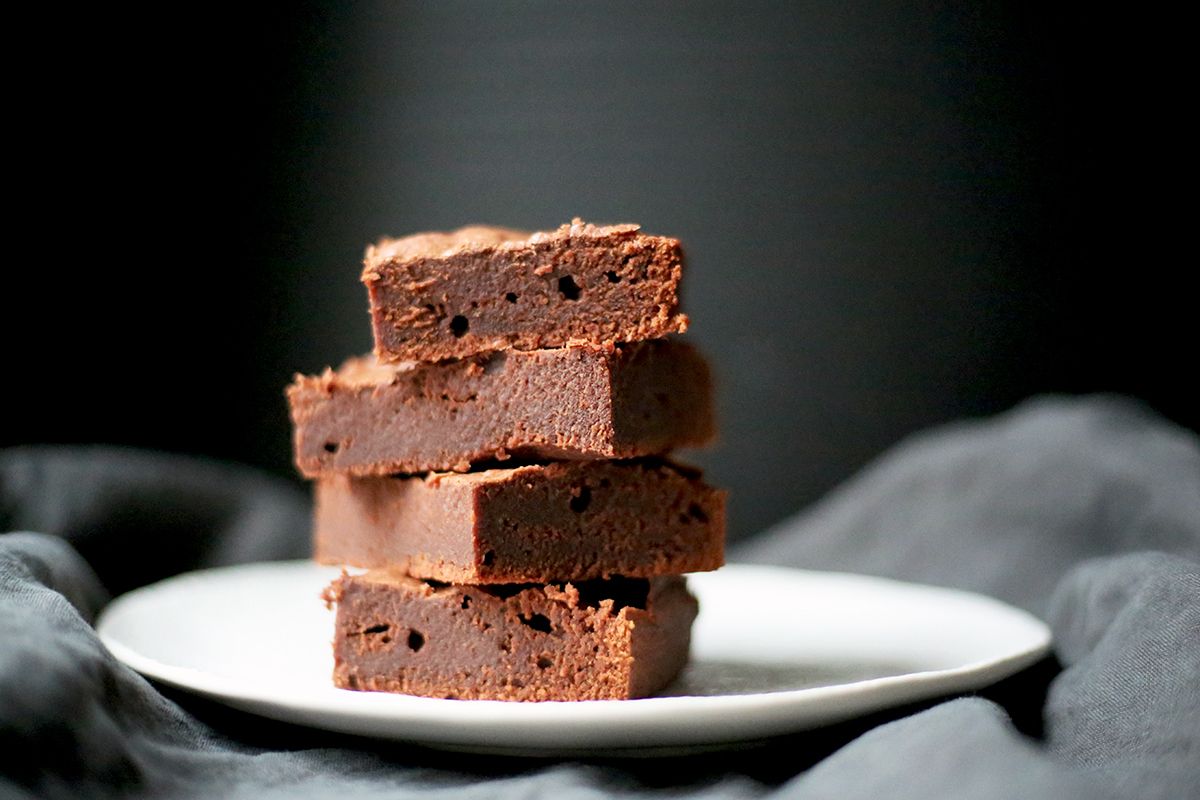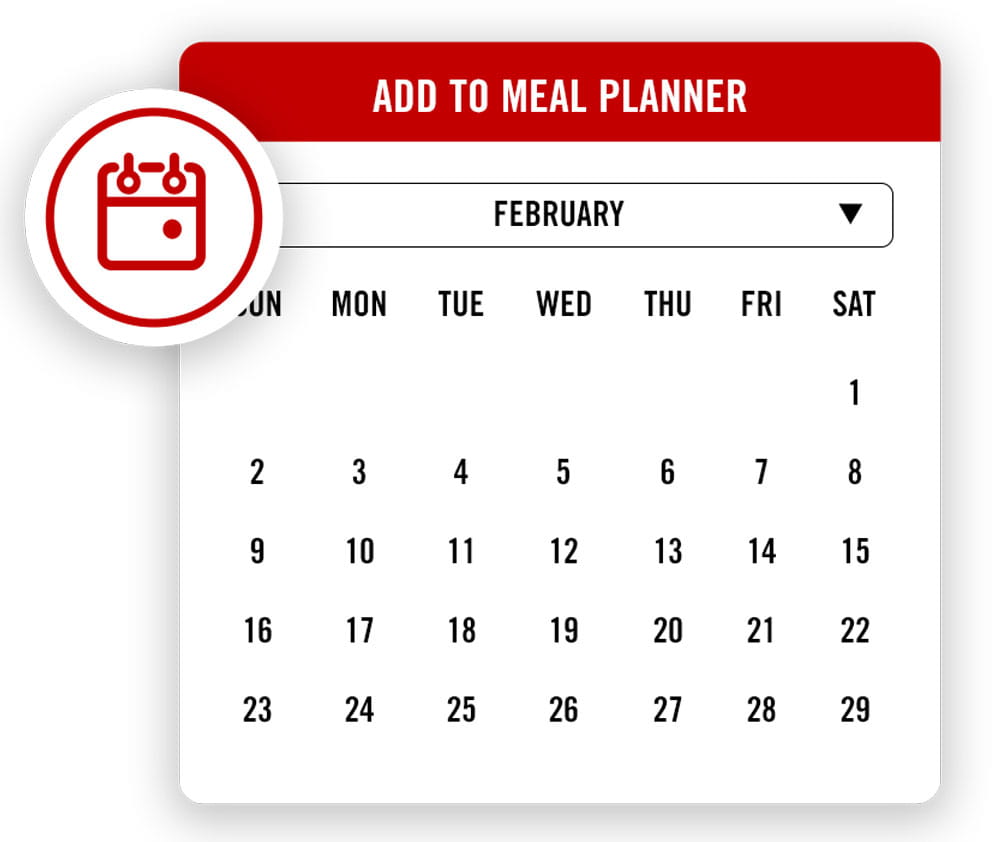Learning how to make cinnamon rolls is an impressive feat, and we'll show you how to do it completely from scratch. Wow guests at your next brunch by presenting a pan of golden brown cinnamon rolls topped with creamy icing—they'll be even more in awe when you reveal that they're completely homemade. We make it easy for you to learn how to make cinnamon rolls from scratch with our step-by-step guide.
Start your day on a sweet note with freshly baked cinnamon rolls. We teach you how to make homemade cinnamon rolls so you can skip the store-bought versions and prepare them just the way you want. We'll also reveal our secret cinnamon roll dough ingredient that will make your rolls super moist and fluffy. As an added bonus, you can chill the dough overnight, then pop it in the oven first thing in the morning to get a jump-start on breakfast or brunch.
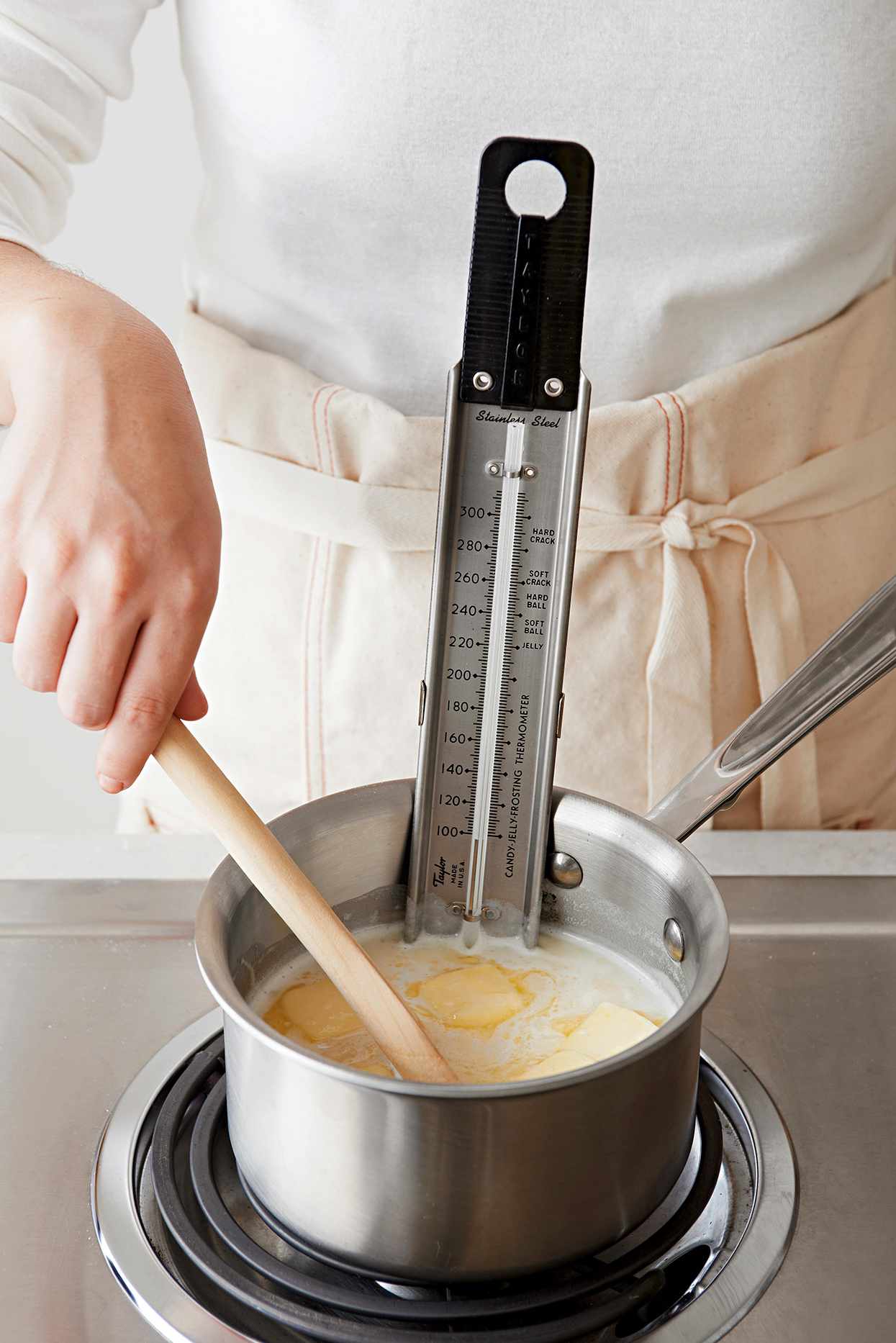
Step 1: Prep Cinnamon Roll Dough
Cinnamon rolls start with sweet dough made from milk, sugar, butter, and eggs, as well as flour, yeast, and salt. We'll be using our famous potato cinnamon roll recipe as a guide, but these steps will help in making your favorite recipes as well. Here's how to get the cinnamon roll dough started:
- In a large mixing bowl ($17, Bed Bath & Beyond), stir together all-purpose flour and active dry yeast.
- In a medium saucepan ($15, Walmart), stir together milk, mashed potatoes (this is what makes them super soft!), butter, granulated sugar, and salt. Heat and stir the mixture until it's just warm (between 120°F and 130°F) and the butter is almost melted.
- Add the milk mixture to the flour, along with 2 eggs. Beat with a mixer on low for 30 seconds, scraping the bowl constantly. Beat on high for 3 minutes. Stir in as much additional flour as you can (2¾ cups to 3¼ cups).
Test Kitchen Tip: Start by adding in the minimum amount of flour in the range. If you add too much flour during mixing and kneading, the bread can become heavy and dry.
Cinnamon Roll Ingredient Tips
Don't make any substitutions until you read these tips from our Test Kitchen:
- Flour: You can replace part of the flour with whole wheat flour or spelt flour if you like, but add it slowly and in small proportion since these flours have a different flavor and create a different baking texture (often firmer) than all-purpose flour. Start by replacing ½ cup to ¾ cup of the all-purpose flour with whole wheat flour, white whole wheat flour, or spelt flour.
- Milk: Save calories and fat by using skim or low-fat milk. Use whole milk to make the dough richer.
- Yeast: Check the expiration date on the package—if the yeast has expired, there's a good chance your dough won't rise.
- Eggs: This ingredient adds richness, structure, tenderness, and color to the rolls.
- Potato: Add cooked mashed potato to the dough to create a light, tender texture (this is our secret ingredient!).
- Butter: Don't substitute margarine or spreads. Butter adds richness and flavor to the dough. Use salted butter unless otherwise stated in the recipe.
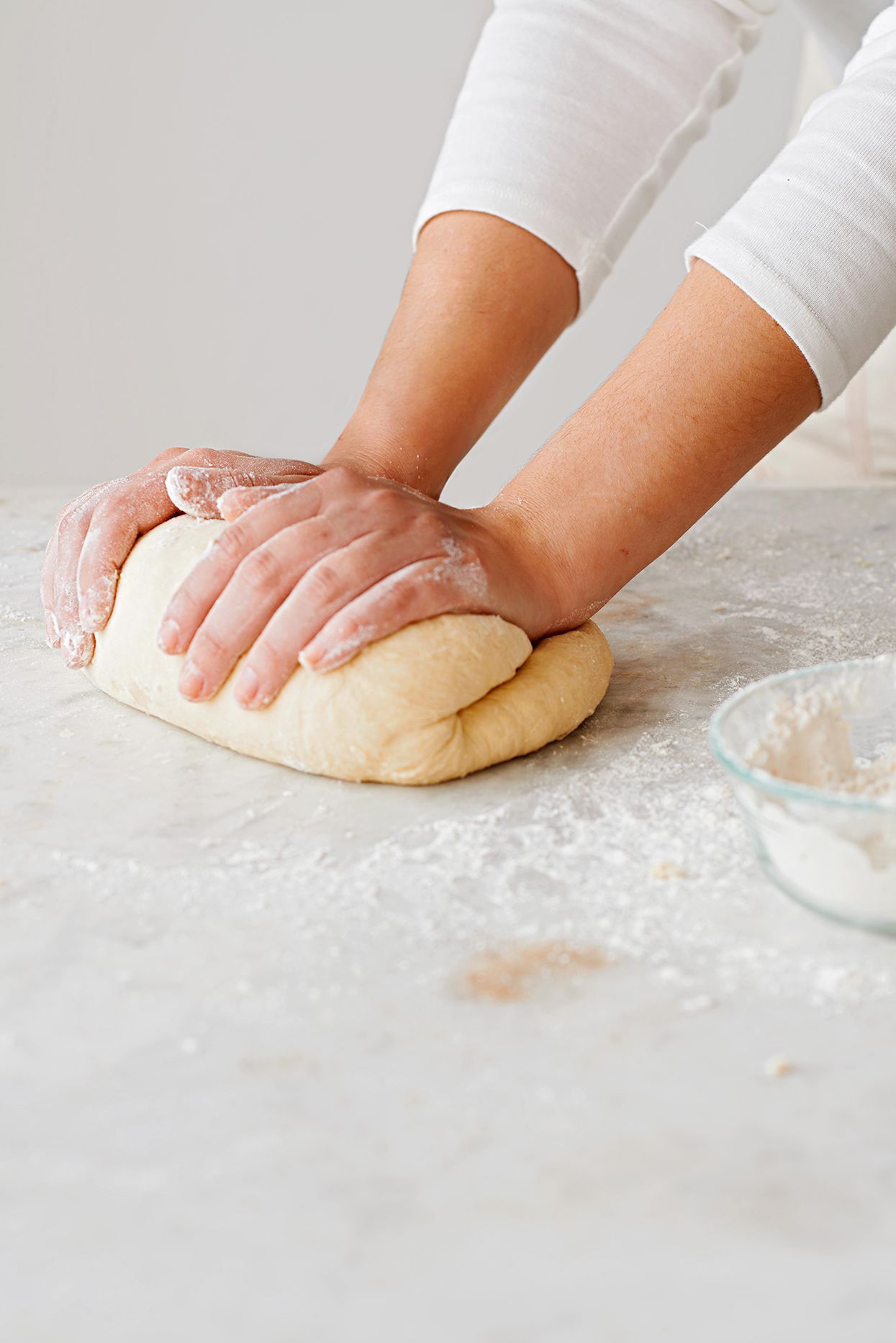
Step 2: Knead the Dough
Cinnamon rolls call for moderately soft dough, which is still slightly sticky and requires 3 to 5 minutes of kneading.
To knead cinnamon roll dough, fold the dough over and push down with the heel of your hand. Turn, fold dough over, and push down again. Repeat this process over and over. You know the dough is ready when it is smooth and elastic. Shape it into a ball.
Test Kitchen Tip: Kneading helps the gluten to form in the dough and creates the sturdy structure needed for rolls.
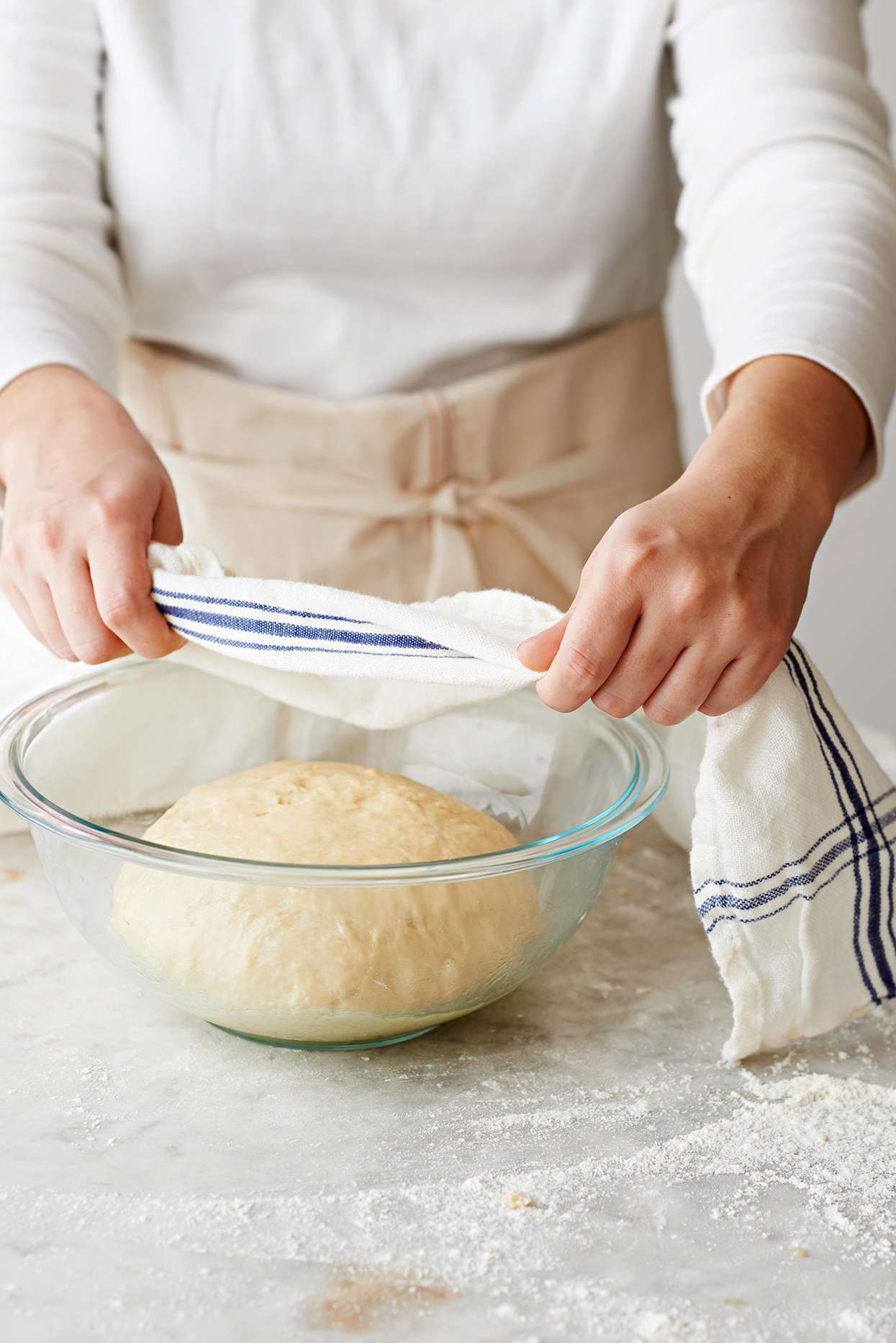
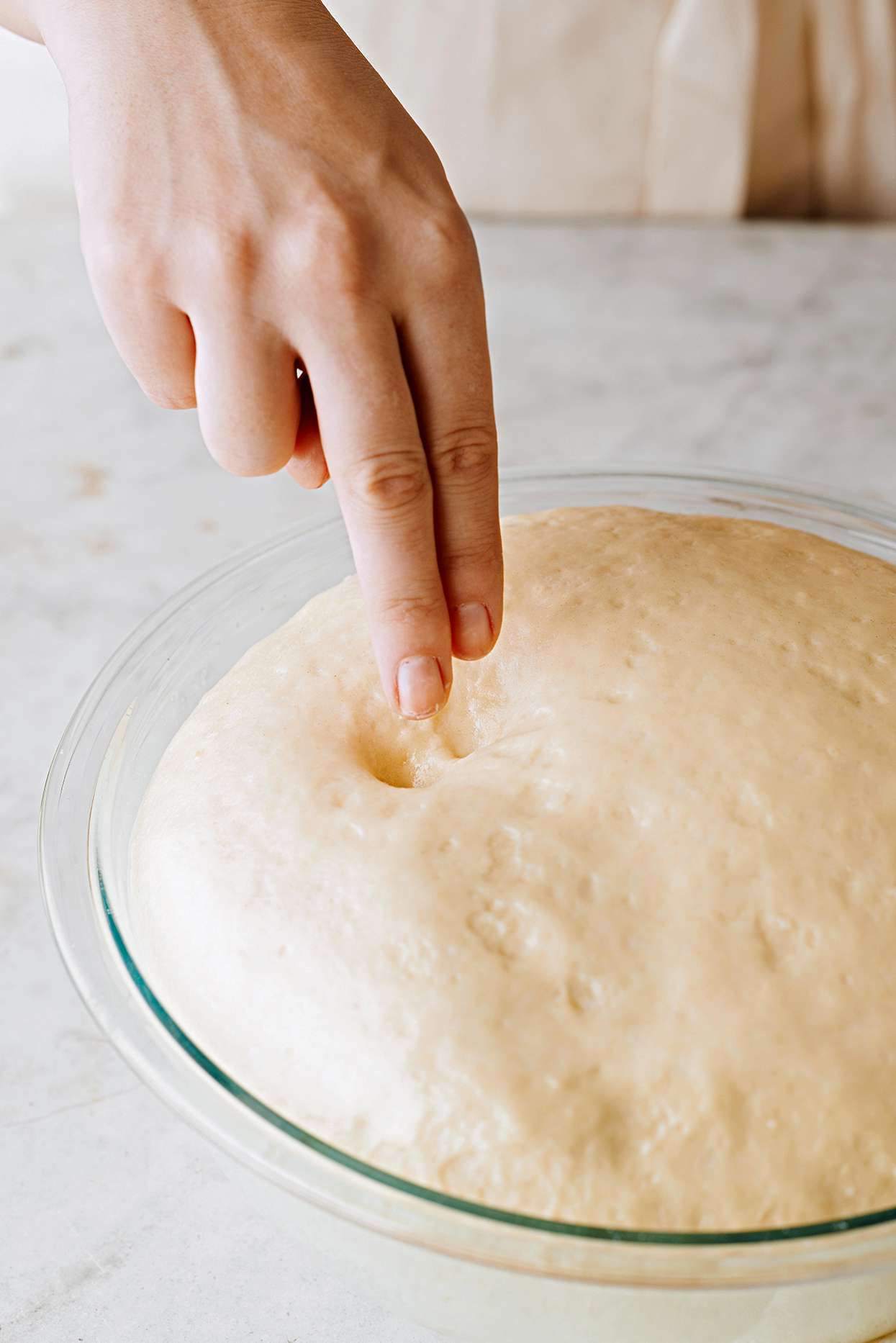
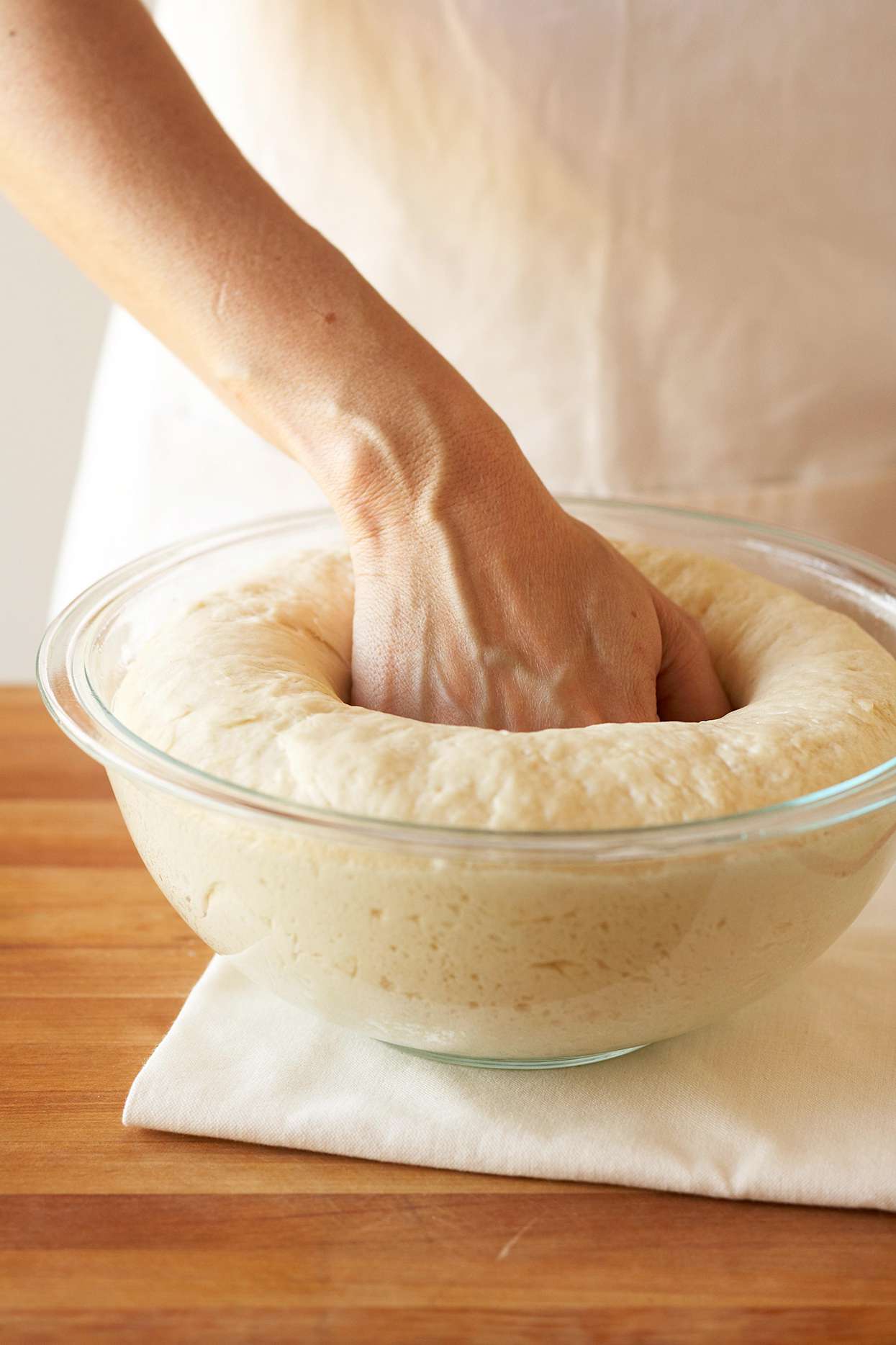
Step 3: Let the Dough Rise
Place the ball of dough into a greased mixing bowl ($7, Target) that is at least twice as big as the dough ball, and turn it once to grease the dough's surface. This keeps the dough from drying out.
Cover the dough and let it rise in a warm place until it has doubled in size (this should take about 45 to 60 minutes). After the rising time, check the cinnamon roll dough to see if it has nearly doubled in size. If you think it's ready, gently press two fingers into the surface of the dough. If the indentations remain in the dough, it has risen enough (if the indentations don't stay, let the dough continue to rise). Punch down the dough by pushing your fist into the center. Turn the dough out of the bowl and let it rest on a floured surface before shaping. This calms the dough and makes it easier to work with (and eliminates big pockets of air).
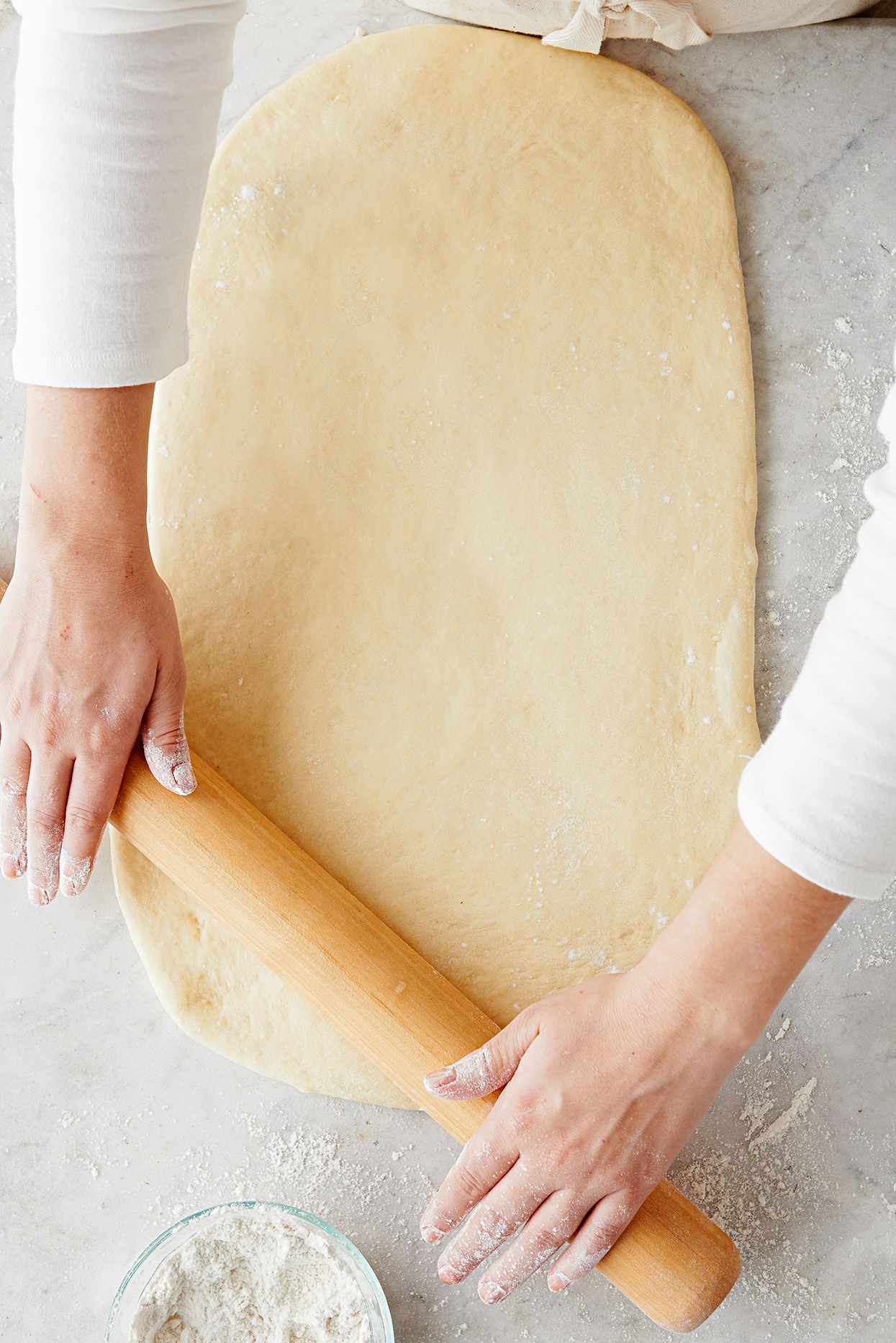
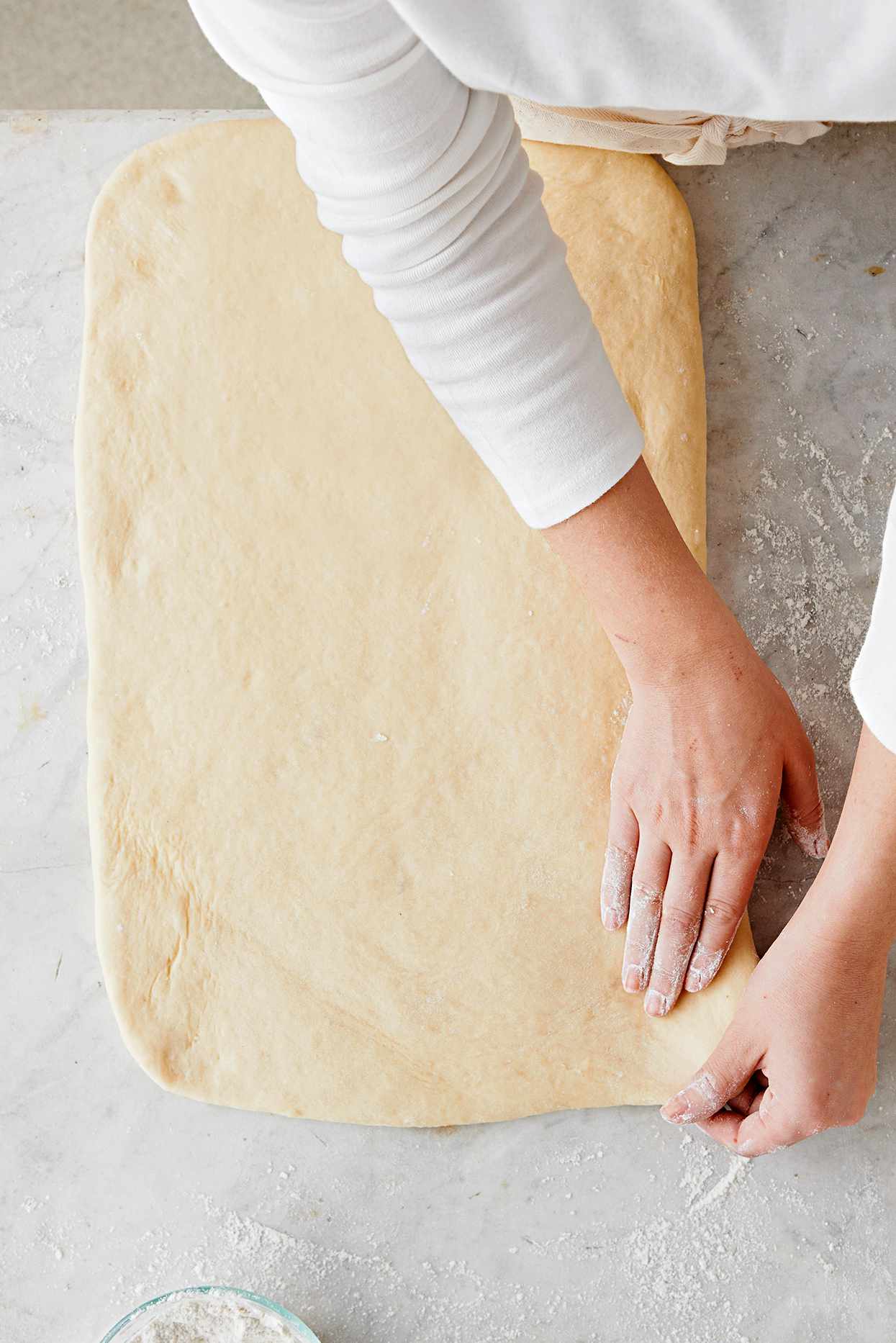
Step 4: Roll Out the Dough
With a rolling pin ($8, Target), roll the dough from the center to the edges into a rectangle measuring 18x12 inches. To make the corners more even, alternate rolling dough from the center to the sides with rolling from the centers to the corners diagonally. When you're finished rolling, gently push and pull the corners so they're square and even (this will make it easier to use the whole roll of dough without trimming). Dab ¼ cup softened butter over the top and spread, leaving a ½-inch border at the edges.
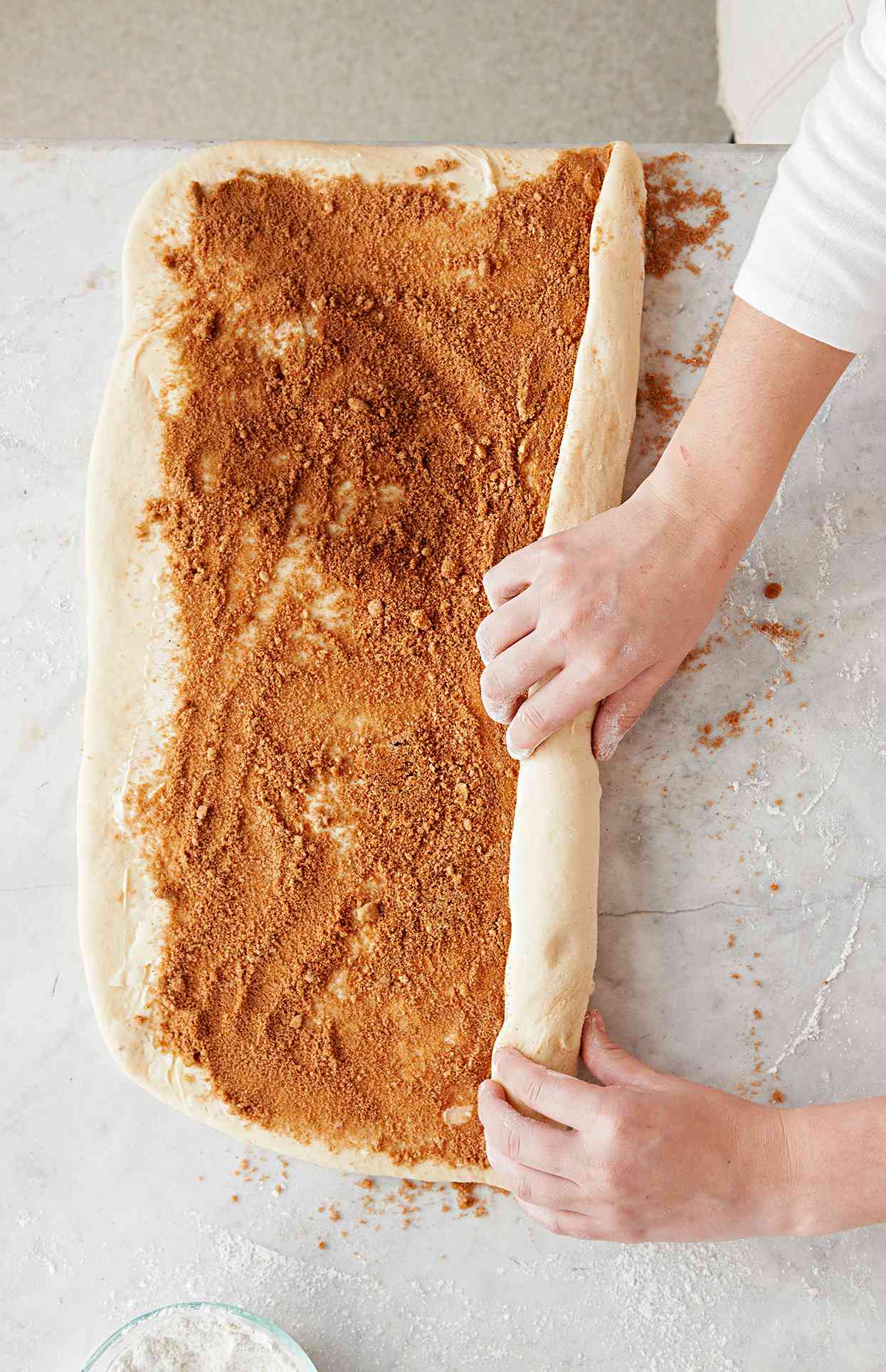

Step 5: Fill and Roll the Cinnamon Rolls
Basic cinnamon roll filling is a combination of brown sugar and ground cinnamon. For a classic cinnamon roll recipe, stir together packed brown sugar and ground cinnamon. You can also embellish it a little by stirring in ½ cup of any of these:
- Regular or golden raisins (or both)
- Finely snipped dried apricots
- Assorted fruit bits
- Dried cherries
- Miniature semisweet chocolate pieces
- Chopped toasted pecans
- Chopped toasted walnuts
Next, sprinkle the filling on top of the cinnamon roll dough, leaving a 1-inch border unfilled on the long sides. Starting from a long side, firmly roll up the dough—but not too tightly. Pinch the edge of the dough to the rolled dough to seal.
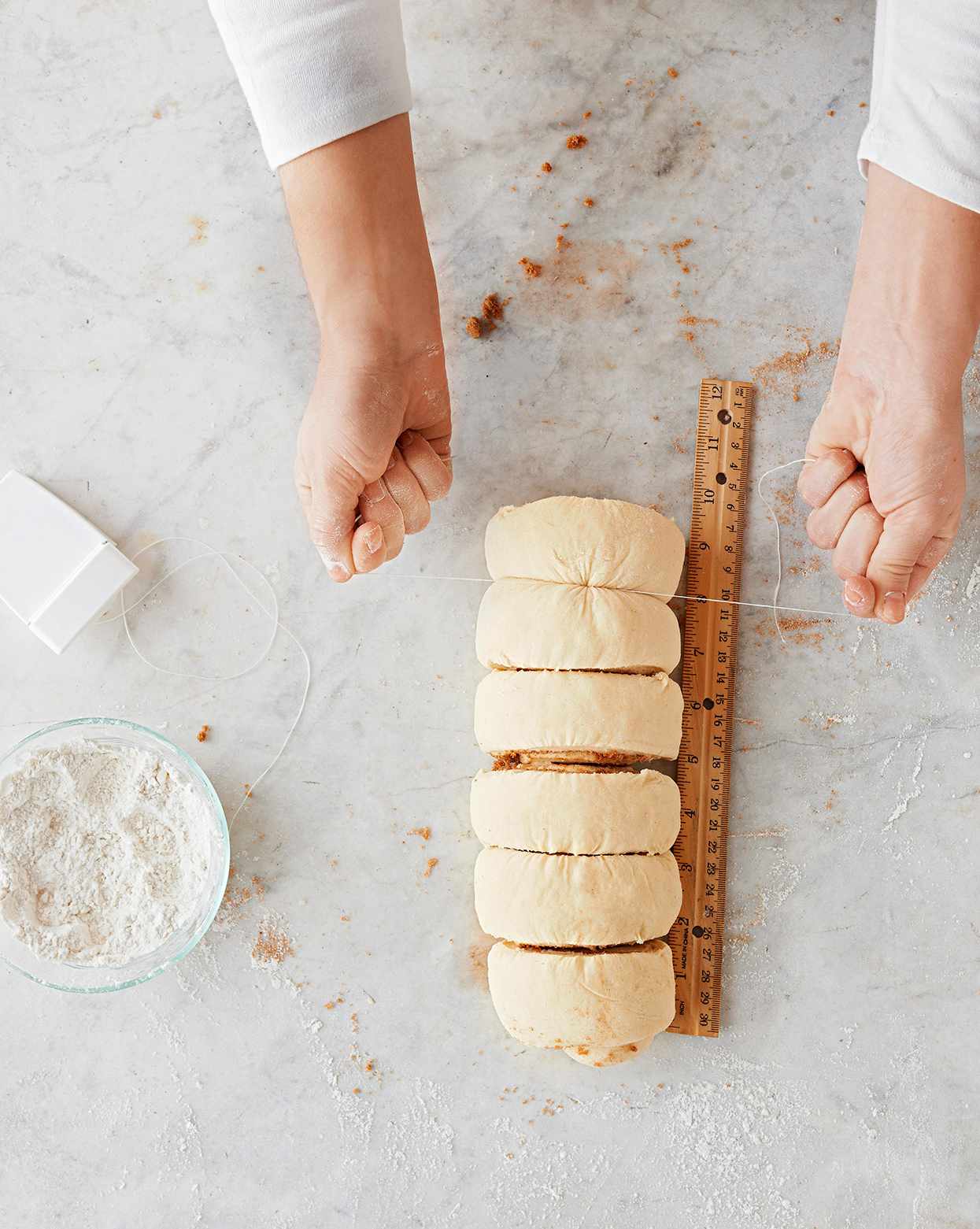
Step 6: Slice the dough
Score the dough roll with a knife to mark 12 rolls (use a ruler to help you cut equal-size rolls). Slide unflavored, unwaxed dental floss under the roll at the scores. That's right, our Test Kitchen declared the best way to cut cinnamon rolls is with floss. Cross the floss ends on top and pull until it cuts through. If you don't have unwaxed dental floss, you can gently cut using a serrated knife ($8, Target) instead.
Step 7: Bake Cinnamon Rolls
Arrange the rolls in a greased 13x9-inch pan ($4, Walmart). Cover loosely; let rolls rise in a warm place until nearly double in size (about 30 minutes). Bake at 375°F for 25 to 30 minutes or until golden. Cool in the pan on a wire rack ($3, Walmart) for 10 minutes, then remove the rolls from the pan.
Test Kitchen Tip: If you'd like to bake the rolls later (for breakfast or brunch in the morning), cover the dough loosely with oiled waxed paper and let it rise, then pop the pan into the refrigerator for 2 to 24 hours. Before baking, let the rolls stand for 30 minutes at room temperature, then uncover and bake.
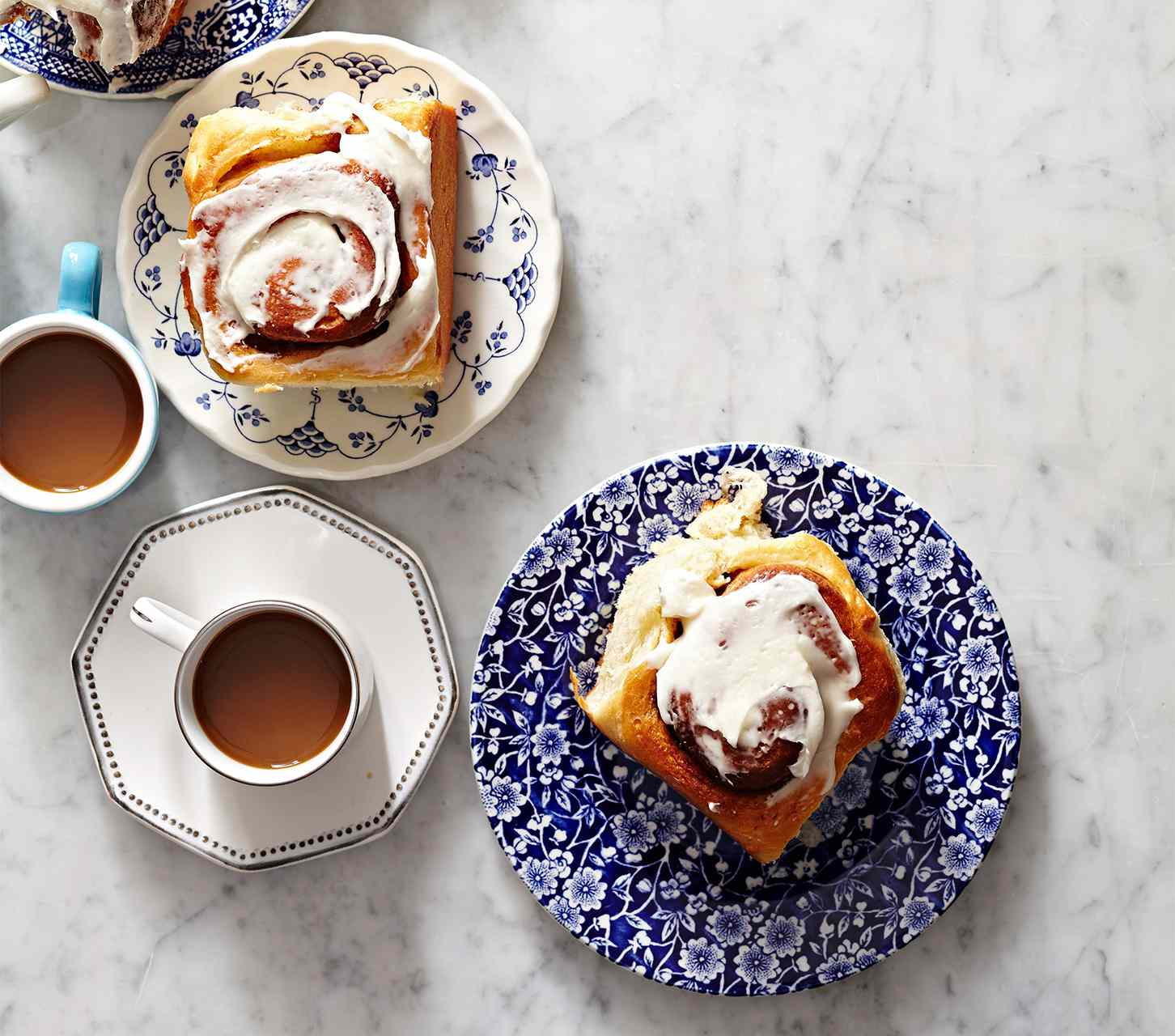
Step 8: Frost the Cinnamon Rolls
Let cinnamon rolls cool in pan for a few minutes. Place a wire cooling rack on top of a piece of waxed paper or parchment paper. Turn the slightly cooled rolls out onto the rack. Use a wire whisk or spoon to drizzle with cinnamon roll icing (more on this next) or use a knife to spread the rolls with the thicker cream cheese icing, if desired. Enjoy!
How to Make Cinnamon Roll Icing
One of our favorite parts about cinnamon rolls is the icing. You have a few different options when you want to learn how to make a glaze, icing, or frosting for cinnamon rolls. Our favorites are browned butter frosting, cream cheese icing, and powdered sugar icing.
More Fun Ways to Use Cinnamon Rolls
We shared our classic recipe for homemade cinnamon rolls, but there are tons of other ways you can dress up this favorite breakfast sweet. You can also make cinnamon roll pancakes make a giant cinnamon roll in a skillet. They can dress up pie, too—cinnamon roll apple pie is a natural mash-up, but using cinnamon rolls to form the crust of a pumpkin pie is just as tasty. There are tons of possibilities, so don't just stick to our best cinnamon roll recipes—get creative and see what other ways you can use them.
This article was written by Andrea Beck from Better Homes and Gardens and was legally licensed through the Industry Dive publisher network. Please direct all licensing questions to legal@industrydive.com.





